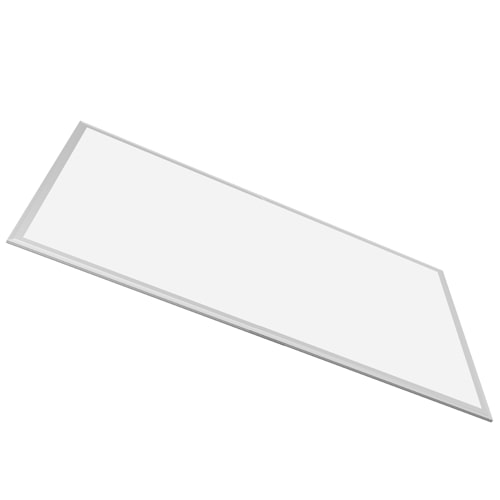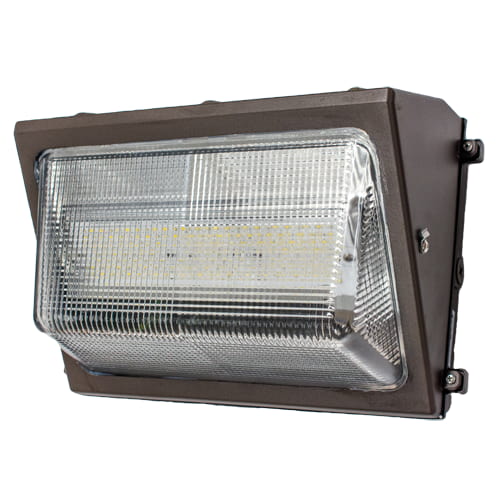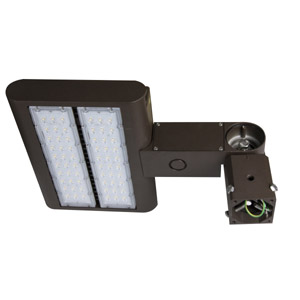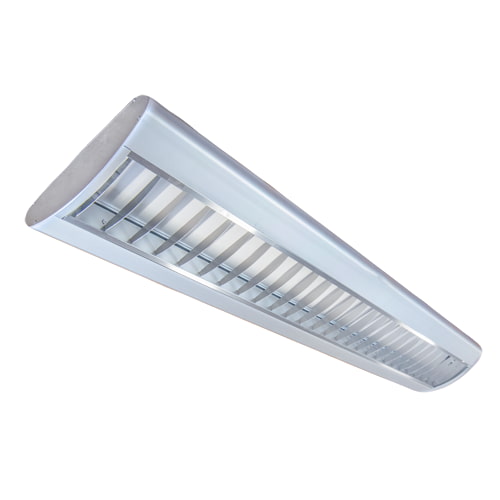School Lighting
School and Education Lighting Applications
Our LED lighting experts have extensive experience with school lighting projects for both public and private institutions. This includes elementary schools, high schools, and instructions for higher education. View our comprehensive selection of school lighting fixtures below or contact our experts for a lighting layout and estimate.
LED Flat Panels
Square shaped lights used in school offices, hallways, classrooms, and rooms with tile ceilings.
LED Tubes
LED tube lights and retrofits for indoor educational lighting and replacing outdated fluorescents.
LED Wall Packs
Wall mounted security lights to illuminate around the exterior of buildings and alleyways.
LED Flood Lights
Use for general area lighting, outdoor security, and school parking lot lighting. Learn More
Learn More
LED Troffer Lights
Designed specifically for drop ceilings for a traditional look with modern LED technology. Learn More
Learn More
Linear Strip Lights
Use for situations necessitating narrow linear lighting, such as school hallways, storage areas, and low ceilings.
LED School Lighting Overview

Educational institutions have extensive lighting requirements for both indoor and outdoor areas, as they often encompass acres of property to be illuminated. This is especially true for colleges and universities, with continuing expansion and campus improvements. Quality lighting is important not only to improve the experience of students and faculty but also to ensure safety and security for schools.
One of the largest improvements in school lighting technology in recent years has been the rapid advancements in LED technology. Schools and educational institutions have traditionally been one of the largest users of fluorescent and HID lighting technology, as efficiency and overall lumen output are the most important factors that are considered. Thanks to LED technology, these key factors are improved upon significantly, with the added benefit of a much better quality of light due to its substantially higher CRI rating. Schools who have tested and used LED lighting in their classrooms have noticed these benefits and never looked back after making the switch.
There are a wide range of different LED lighting options, bulbs and fixtures available for indoor and outdoor applications, with each being subdivided into specific types for each individual installation. These vary between traditional troffer and linear style fixtures, all the way to sealed weatherproof fixtures such as canopy and flood lighting. Regardless of the physical configuration of the school or educational institution, there is an LED lighting solution for every illumination need. Among the various regulatory requirements for academic institutions, there are certain average illumination levels outlined by the GSA. Learn more below.
School Lighting Applications
Classroom Lighting - Classroom lighting plays a crucial role in creating an optimal learning environment. Proper lighting can enhance students' focus, reduce eye strain and headaches, and create a positive and energizing atmosphere. LED lighting is a great option because it provides bright, energy-efficient light and is also easy on the eyes. It's also important to avoid harsh overhead lighting and to consider dimmable lighting for different times of the day and different activities. We use a variety of LED panel lights, LED tubes, and tile ceiling fixtures for classrooms around the U.S, including fixtures with dimmable & color/power select technology.
School Hallways & Corridors - Due to their high foot traffic, hallways and corridors require significant lighting in order to ensure that they are safe for all users. LED lights have become increasingly popular for this application due to their compact size and powerful light output. Since these lights are usually left on continuously, the greater efficiency of LED technology is a gladly welcomed benefit. The most common types of lights for this application are flat panel and troffer style lights, although strip lights and vapor tight fixtures are also used in certain situations.

Bathroom & Locker Rooms - These areas have unique lighting requirements due to the general dampness and humidity present. In most cases, the best type of lighting is something with an IP65 or better rating for moisture resistance, such as vapor tight fixtures and canopy lights. Areas without showers generally do not require moisture resistance, and traditional troffer and flat panel lights can be used in those applications without any troubles. LED lighting is ideal for bathrooms and locker rooms due to its energy efficiency and high quality of light produced, providing great cost savings to schools and reducing the possibility of a slip and fall accident on tile floors.
Conference Areas - Having low-profile yet highly visible illumination throughout a school is important not only for students but also staff. We use lighting fixtures with state-of-the-art LED technology to provide the highest quality of illumination for conference room settings. Our lighting products are energy-efficient, reliable, and provide an ideal atmosphere for conference and office area settings.
Gymnasium & Recreation Areas - Indoor recreation areas and gyms require significant levels of light in order to ensure proper visibility and safety. Typically these facilities have tall ceilings and large areas to be illuminated, necessitating powerful fixtures. The most popular fixtures for these facilities are UFO high bay lights which provide intense lumen output that ensures proper light levels on the floor below. These fixtures are suspended from cables or chains from the ceiling above.
Parking Lot Lighting - School parking lots are normally much larger than an average commercial parking lot due to vehicle parking needs and also school bus traffic. Accordingly the lighting requirements for these parking lots is also much more than average, with pole mounted parking lot lights being the standard choice. These lights offer a wide beam angle spread while also being powerful enough to provide solid illumination on the ground below to ensure the safety of students, parents, teachers and school staff as they traverse the lot on a daily basis. In some cases, flood and canopy lights are used for smaller areas such as walkways and overhangs that cover pickup and dropoff areas.
School Lighting Requirements
When it comes to school lighting, the U.S General Services Administration (GSA) lays out certain criteria depending on the area you wish to illuminate. According to the GSA, lighting should be designed to enhance both the overall building architecture as well as the effect of individual spaces within the building.
Below is a chart with several GSA lighting requirements based on average lumens per square meter (lux); for the benefit of the reader, we’ve converted lux into foot candles (fc) and provided these numbers as well.
| Application | Illumination Level in Lumens/Square Meter (lux) | Illumination Level in Foot Candles (fc) |
|---|---|---|
| General Parking Structuctures | 50-100 | 4.6-9.2 fc |
| Parking Structure Entrances | 500 | 40.45 fc |
| Office/Cubicle Areas | 500 | 40.45 fc |
| Conference Rooms | 300 | 27.87 fc |
| Training Facilities | 500 | 40.45 fc |
| Indoor Corridors | 200 | 18.58 fc |
| Indoor Stairwells | 200 | 18.58 |
| Bathrooms | 200 | 18.58 fc |
| Locker Rooms | 200 | 18.58 |
| Janitorial / Storage Areas | 200 | 18.58 |
| Generator / Electrical Rooms | 200 | 18.58 |
| Mechanical Rooms | 200 | 18.58 |
| Lunchroom & Dining Areas | 150-200 | 13.94-18.58 fc |
| Garbage Rooms | 200 | 18.58 |
| Kitchens | 500 | 40.45 fc |
| Gymnasium & Fitness Areas | 500 | 40.45 fc |
| Child Care & Education Centers | 500 | 40.45 fc |
Lighting Selection Factors

There are a number of different factors that go into selecting lighting solutions for a school facility. The primary factor taken into consideration is the layout of the building and property itself, especially when it comes to ceiling heights. Higher ceilings, such as those in gymnasiums, cafeterias and auditoriums will require higher powered high bay lighting with a narrow beam angle in order to provide proper candlepower output on the floor below. Alternatively, for areas such as hallways, classrooms and libraries with shorter ceilings, troffer lights, low bays and linear lights tend to be the best choice for providing a wide beam angle with solid illumination qualities.
In addition to selecting the correct fixture to find the right candlepower levels, certain color temperatures are ideal for educational environments which will also affect which fixture or bulb is chosen. Generally speaking, for schools the best color temperature for learning is approximately 5000K, which is as close to natural sunlight as possible. This provides a combination of maximum visibility as well as being easy on the eyes - reducing fatigue and improving student learning and academic performance.
School Lighting FAQs
Q. What is the best color temperature for school lighting?
The best color temperature for educational purposes is 5000k, which closely approximates natural sunlight. This provides excellent visibility and reduces fatigue, allowing for the best possible productivity and an environment conducive to learning.
Q. Do LED lights help improve students' productivity?
Yes, they offer a particularly notable advantage over traditional lighting technology in terms of productivity and learning. Thanks to their significantly higher CRI rating, as well as an elimination of the flickering associated with ubiquitous fluorescent lighting, they allow for easier instruction, reading and put students in a better state of mind for absorbing the material they are taught.
Q. Can I upgrade existing lighting fixtures to work with LEDs?
Upgrading existing legacy lighting fixtures has never been easier. With most fixtures, such as troffers and recessed lighting, upgrading to LED technology is as simple as changing bulbs. Others may require a bit more effort although it is still quite easy, such as wiring around a magnetic or electronic ballast system. Certain types of fixtures can even be modified to work with a retrofit LED kit, which is great for applications where replacing the fixture entirely isn’t possible or practical.


